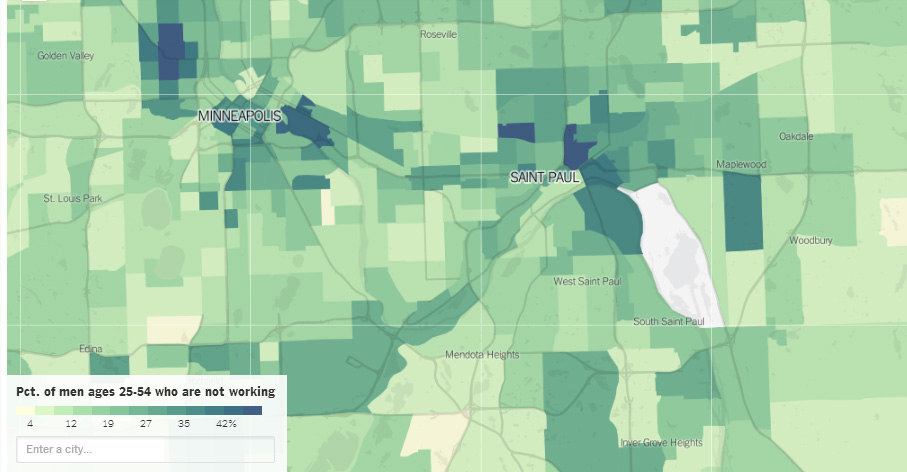This is the sort of map you could spend all morning looking at.
It’s part of the New York Times’ fascinating story today on the number of men who aren’t working.
The data has been broken down in this visualization.
Parts of it are a little misleading — the high rate in a section of Maplewood might have something to do with the fact the county workhouse is there, for example — but the bigger picture painted by the Times’ article is pretty stark: Working America is in decline, it says.
Many men, in particular, have decided that low-wage work will not improve their lives, in part because deep changes in American society have made it easier for them to live without working. These changes include the availability of federal disability benefits; the decline of marriage, which means fewer men provide for children; and the rise of the Internet, which has reduced the isolation of unemployment.
At the same time, it has become harder for men to find higher-paying jobs. Foreign competition and technological advances have eliminated many of the jobs in which high school graduates like Mr. Walsh once could earn $40 an hour, or more. The poll found that 85 percent of prime-age men without jobs do not have bachelor’s degrees. And 34 percent said they had criminal records, making it hard to find any work.
The resulting absence of millions of potential workers has serious consequences not just for the men and their families but for the nation as a whole. A smaller work force is likely to lead to a slower-growing economy, and will leave a smaller share of the population to cover the cost of government, even as a larger share seeks help.
“They’re not working, because it’s not paying them enough to work,” said Alan B. Krueger, a leading labor economist and a professor at Princeton. “And that means the economy is going to be smaller than it otherwise would be.”
But 44 percent of the men in the survey said there were jobs in their area, but they’re not willing to take them.

